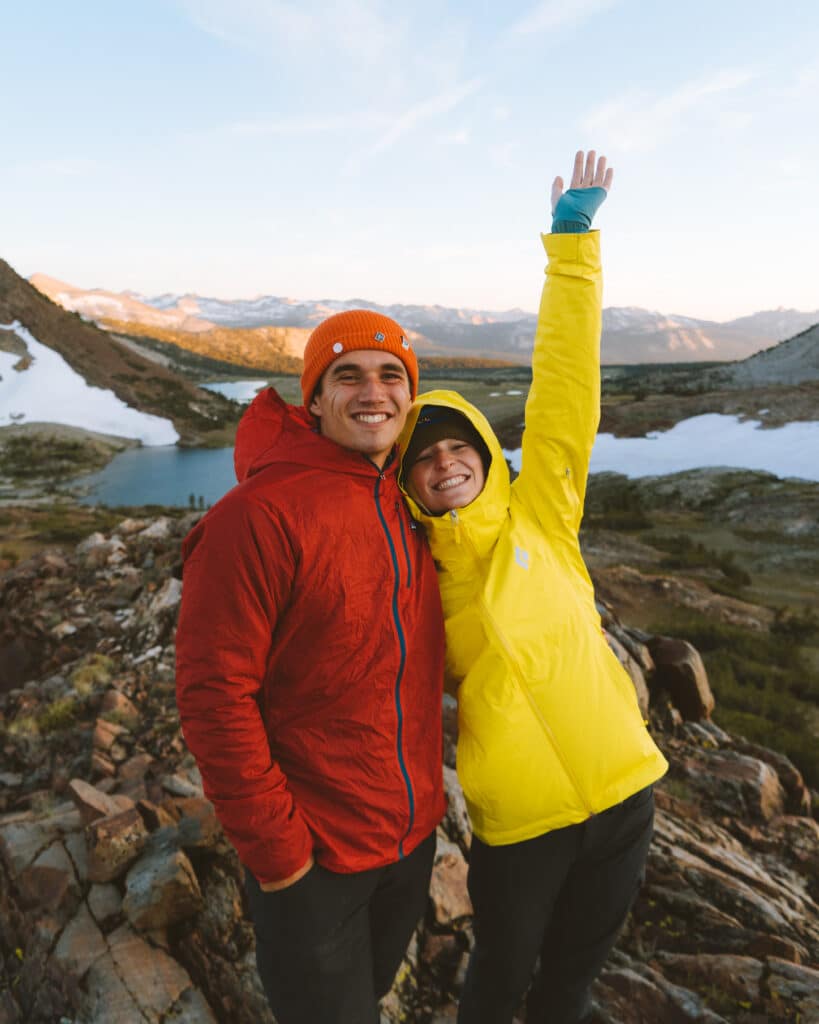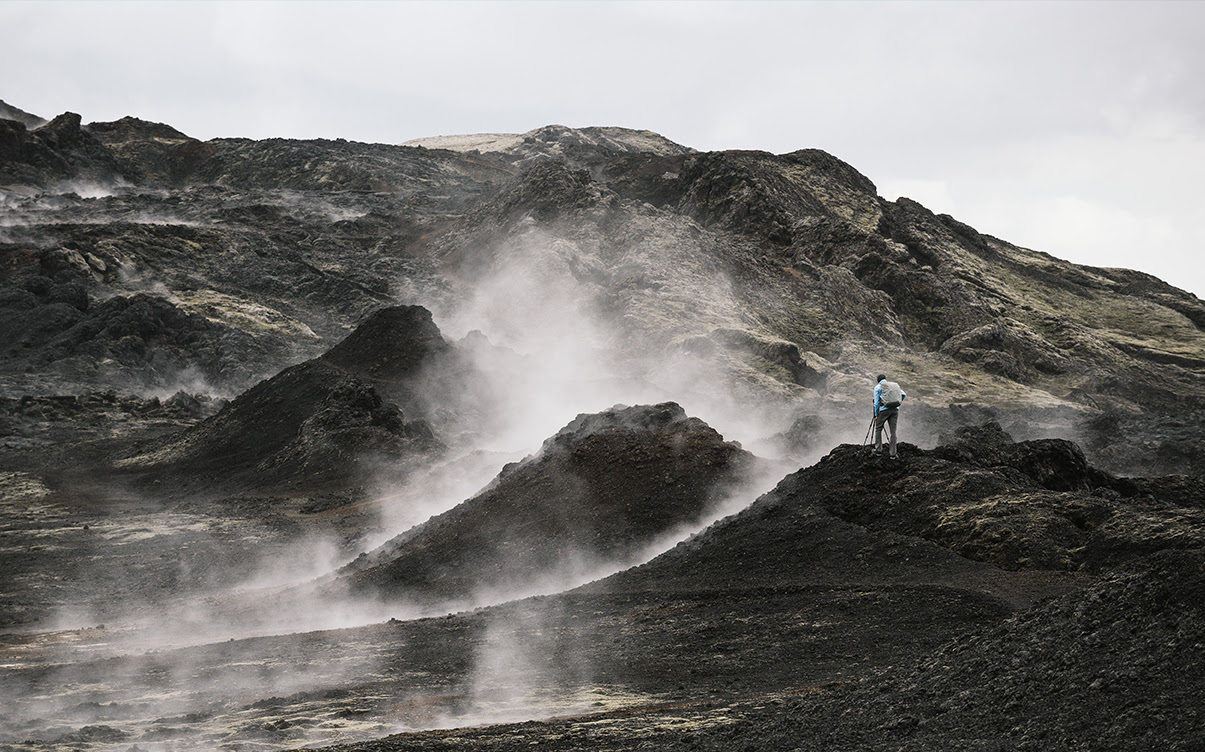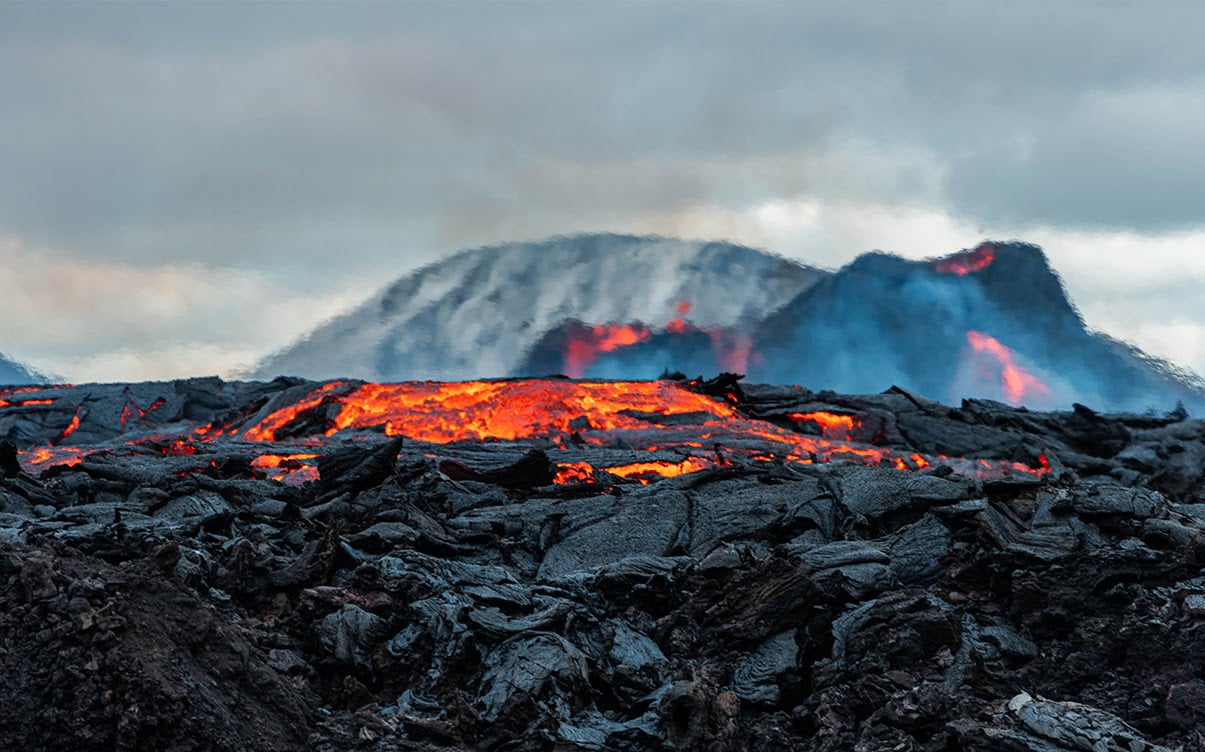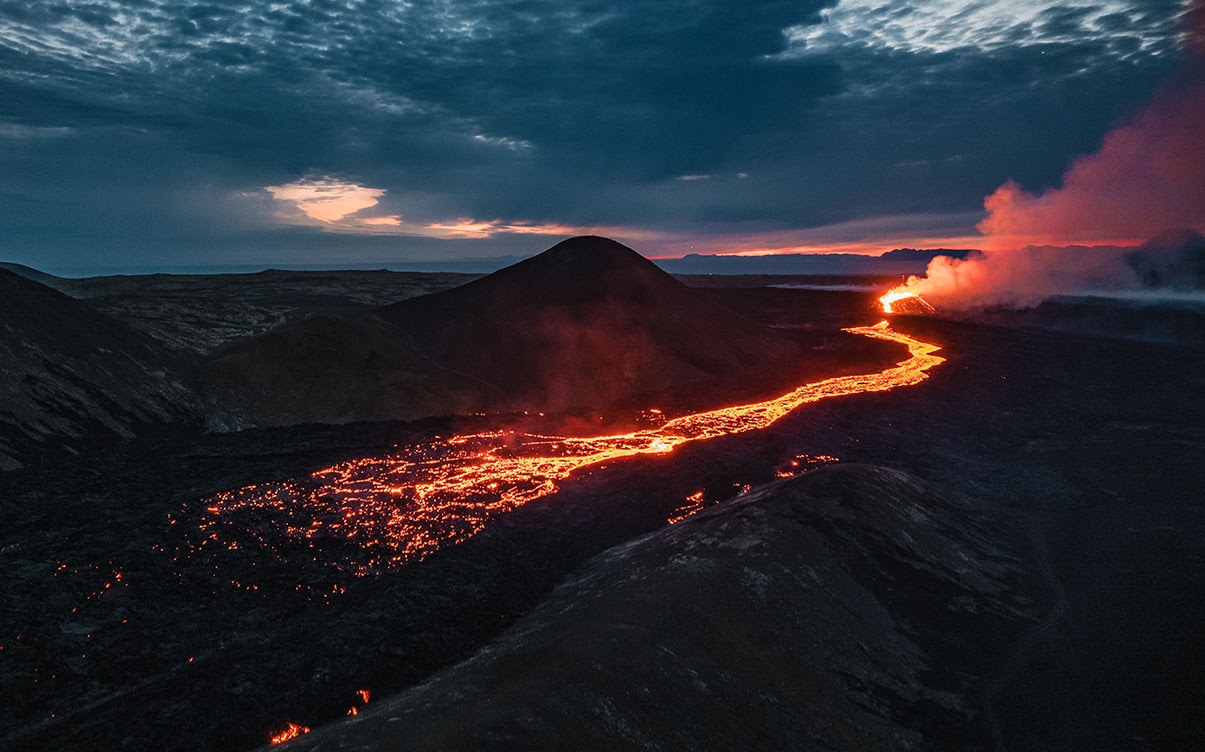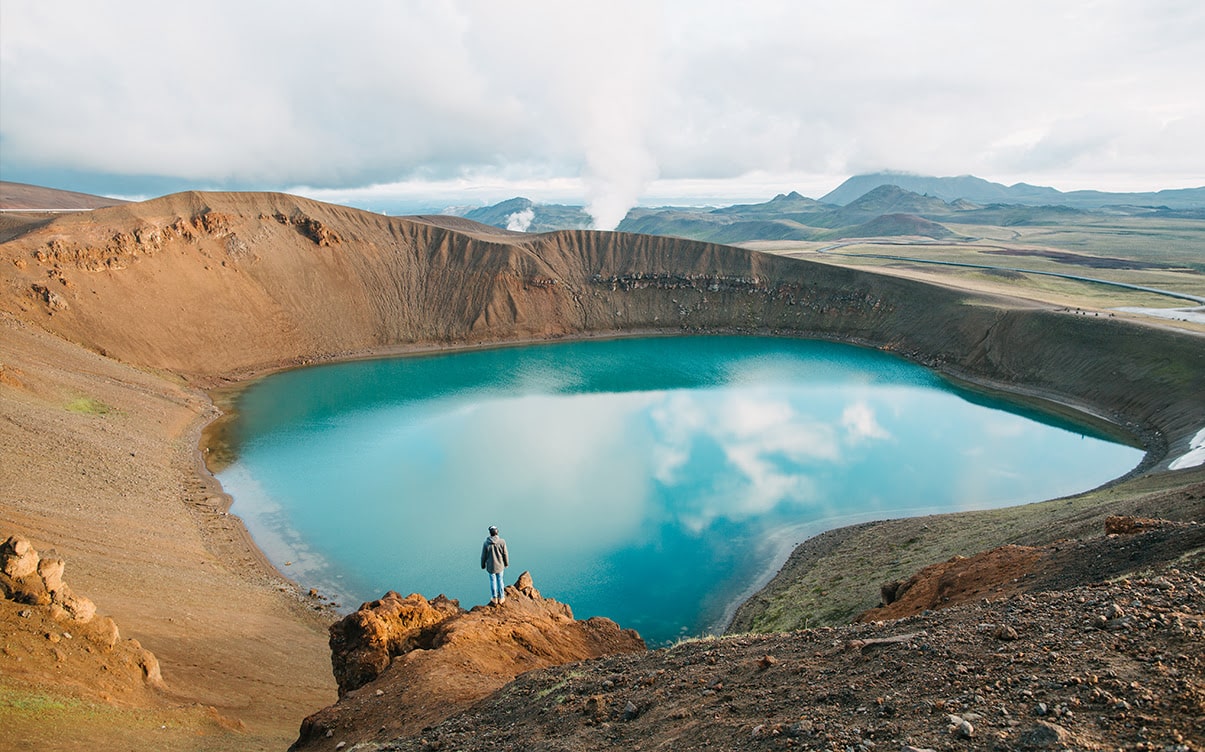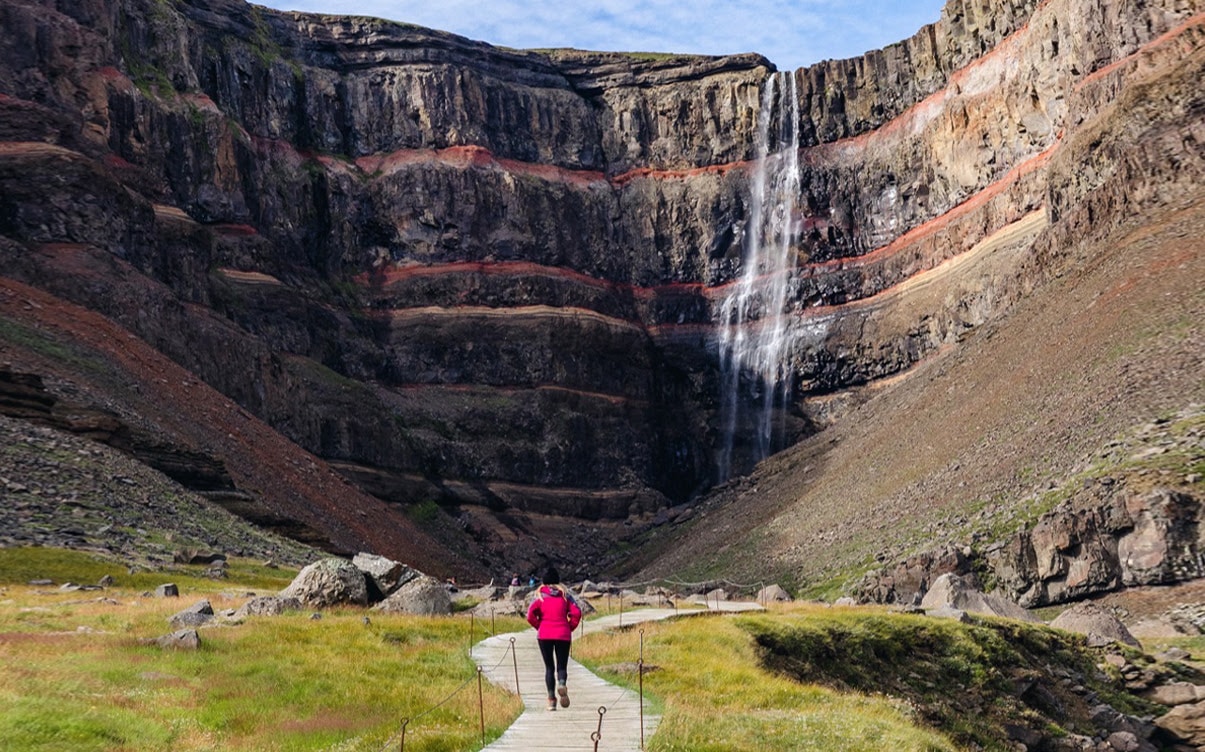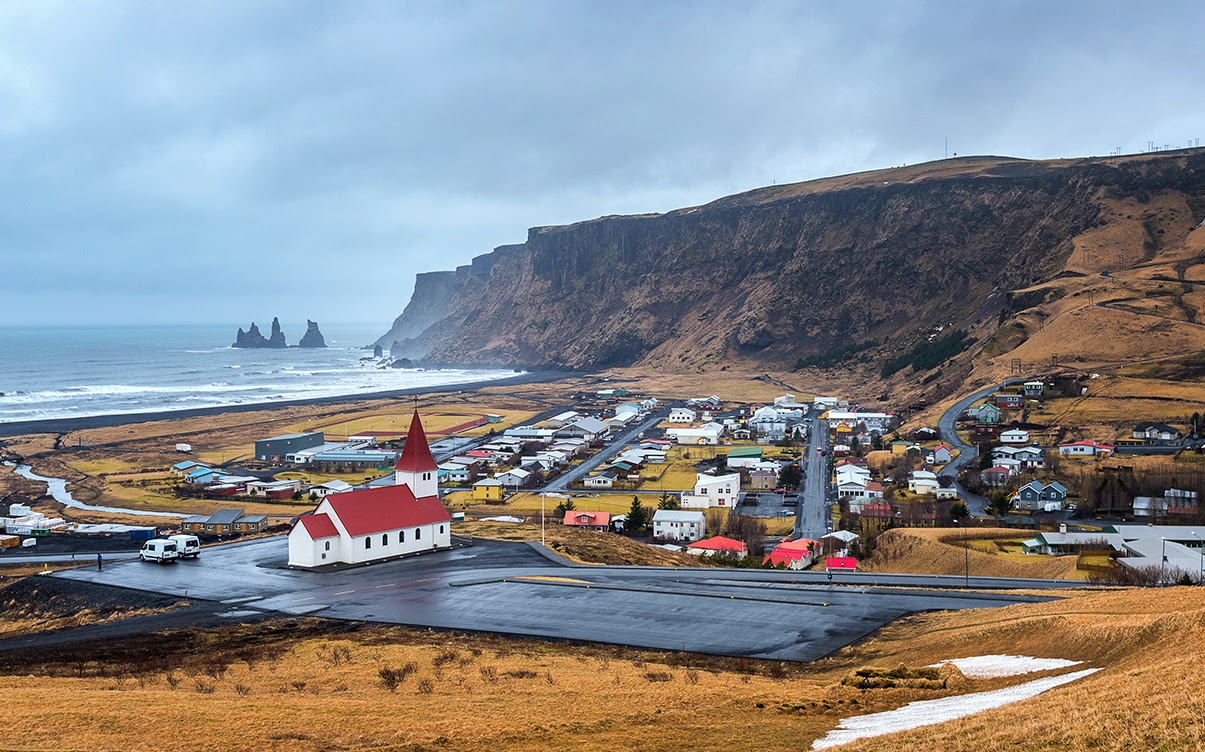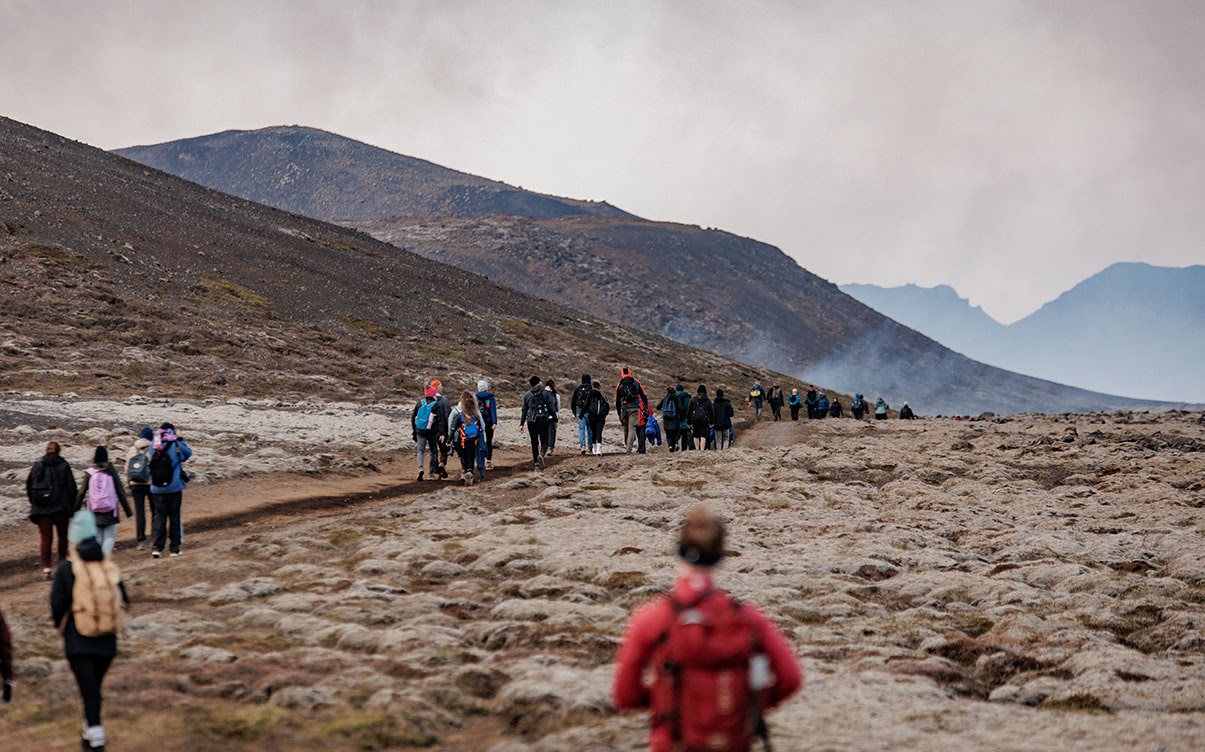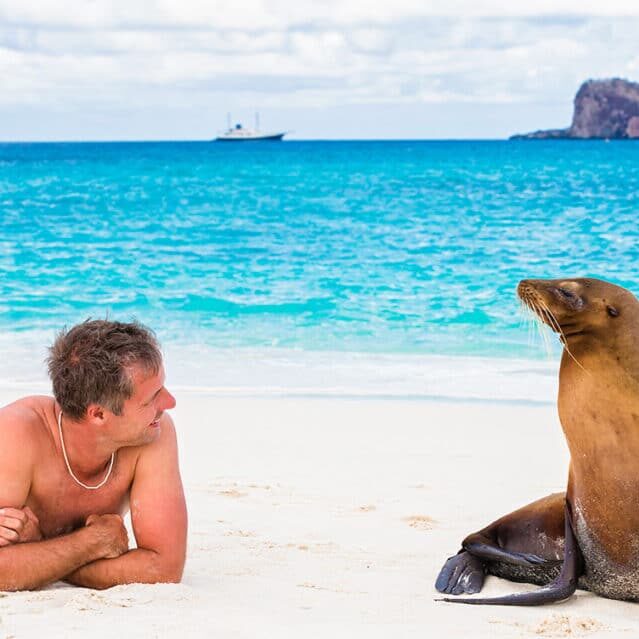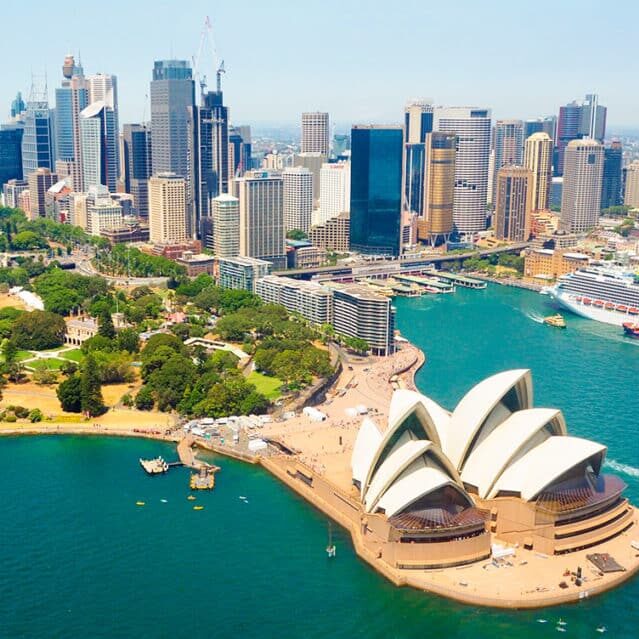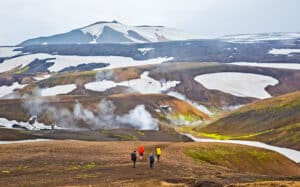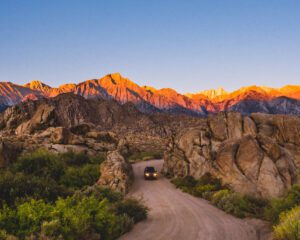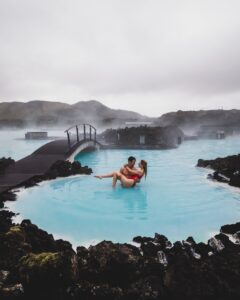FAQ: Are Volcanoes a Concern When Taking a Trip to Iceland?
Disclaimer: This post may contain affiliate links. Please see our Disclosure Policy and Advertiser Disclosure for details.
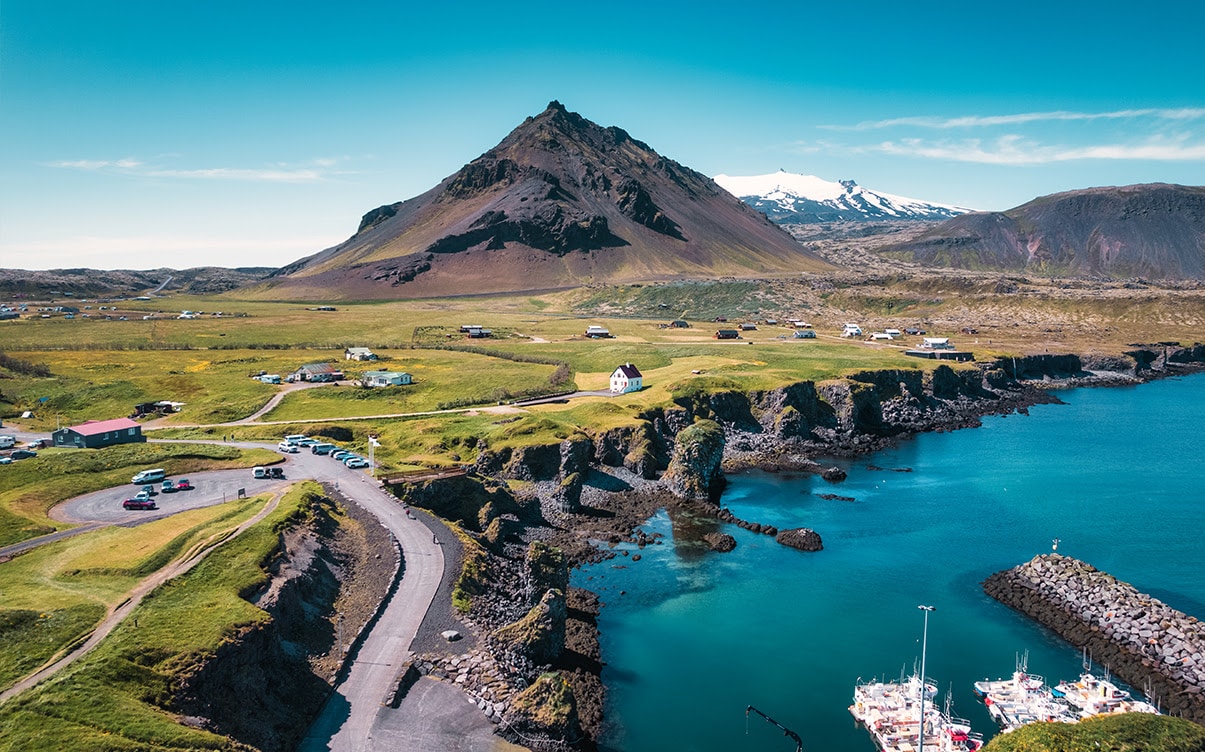
Iceland is a volcanically active island nation, and that means if you fly out for a visit, you can see the wonder and the majesty of the volcanoes for yourself. Of course, that leads to the question: is it safe? Are the volcanoes a concern? We’ve all seen the news over the last year of the eruptions threatening an entire town, Grindavik; what if you were in that town when it happened?
Well, let’s talk about it!
Are Volcanoes a Concern When Visiting Iceland?
First, a general answer. Are volcanoes a concern at all when you’re visiting Iceland? The answer is yes, but not necessarily in the way you think.
Volcanoes are a concern in three ways.
The first is if they disrupt flights. A volcanic eruption can spray lava and fire in all directions, but those fireballs don’t actually fly all that far, all things considered. On top of that, most volcanic eruptions in Iceland are much smaller and are more like fissures opening up and venting heat and magma flows down the sides of a mountain.
No, what you’re actually concerned about is the smoke. Smoke – made up of all sorts of noxious chemicals – can disrupt air traffic in an area. Until the authorities know what’s going on and can track and measure the plume, flights may be grounded to avoid issues with planes. This has the potential to cancel the flight that brings you to Iceland or the one that sends you home.
It’s important to state here that not all eruptions are that violent, nor do they all disrupt travel. The Grindavik eruption didn’t disrupt air travel at all, and while it caused evacuations of the town, it was still quite contained.
The second concern is if an eruption surfaces near where you’re staying. The Grindavik eruption shows this pretty clearly. The eruption was quite near the town, and also near one of Iceland’s most famous hot spring resorts, Blue Lagoon. Even Blue Lagoon was only closed temporarily, and while they’ve had to redirect traffic due to closed roads and complete some new infrastructure to account for it, they’re back open.
It just goes to show how routine the idea of seismic activity is in Iceland. It can happen, the proper authorities can keep track of it and know what’s going on, and life can continue just as soon as it’s able.
The third concern is a little different, and it is whether you want to see an active volcano for yourself. Volcanic activity can be somewhat predictable but not entirely predictable, so you never know when an eruption is going to occur or when one is going to stop. More on that later.
Is Volcanic Activity Increasing in Iceland?
Interestingly, the answer is likely yes.
Volcanic activity tends to go in cycles. The duration of those cycles can vary depending on where in the world the volcanoes are; there are volcanoes that haven’t erupted in tens of thousands of years, and there are others that erupt every few years.
In Iceland, the most volcanically active area is the Reykjanes peninsula, which is the jut of land in the south-west of the island, south and west of Reykjavik. The whole area is actually a UNESCO Global GeoPark for its volcanic activity, and it’s very common to see and feel both eruptions and earthquakes.
Most of the eruptions in this area tend to be fissure eruptions, which are essentially just cracks opening in the ground and magma bubbling up to the surface. They can start fires, and depending on their position, they can cause other issues, but they aren’t the huge, impressive, exploding mountains you might picture from popular culture.
Icelandic authorities are predicting that we’re likely at the start of a new volcanic “season” and that volcanic activity will be higher – and potentially increasing – for years or decades to come. So far, though, nothing hugely dangerous or even really disruptive has happened recently.
If you’re interested in geology, here’s a fun map of the volcanic zones throughout Iceland. You can see how the major volcanoes aren’t even in the peninsula (which is the gray bit with orange stripes in the lower left corner leading off into the ocean).
The most recent volcanic eruption that was more of the “exploding mountain” kind and that did cause air traffic disruption was the 2010 eruption of Eyjafjallajokull. That eruption technically started as early as February of that year, with thousands of rapid earthquakes originating from the center of the volcano until it finally erupted in March. It was very impressive!
Even then, despite a massive plume of smoke that blanketed parts of Iceland and even drifted across the sea to disrupt parts of Europe, it really only disrupted airspace for about a week. A few flights had to be redirected after that point, and certain areas were worse than others, but it goes to show that even an incredible display is a short-term problem.
How Many Volcanic Eruptions Happen in Iceland?
It’s difficult to fully quantify an answer to this kind of question. There have been hundreds of eruptions over the last 10,000-some-odd years, but that’s not saying much that’s meaningful, is it?
Wikipedia has a great list of eruptions throughout history. Since the year 2,000, there have been somewhere between 10 and 20 eruptions, depending on how you divide them. The eruptions near Grindavik, for example, could be considered one set of eruptions or as many as four or five separate eruptions with lulls between them.
One of the most active volcanoes in all of Iceland is called Hekla, and it has been known to erupt at least 20 times… since the year 1210. It might not seem like 20 eruptions over the course of eight hundred years is a lot, but that’s the kind of scale volcanoes operate on.
Can You Visit the Volcanoes in Iceland?
Yes!
There’s actually a lot of nuance to this question. For example; do you want to visit an incredible mountain that is a known volcano, but which hasn’t erupted in centuries, so you can explore lava-formed caves and tubes, walk through fields of volcanic glass, and not worry at all about sudden volcanic activity? You can certainly do that!
Or would you like to visit something like the Grindavik fissure to see the lava up close and personal? You can do that, too, but with a lot more limited options.
For the active volcanoes, you’re generally not allowed to drive or hike near them. The Icelandic authorities don’t want anyone getting hurt, so they ensure that people don’t go near the active areas. You can, however, take a plane, or more frequently, a helicopter, to fly near them and see them from above. These are incredible, if expensive, experiences, and they’re well worth doing.
After all, even if volcanic activity is increasing, it can still be years or decades in between significant eruptions, so if any of the currently-active eruptions settle down, you can miss your chance.
We have a whole guide on visiting volcanoes in Iceland over here, if you’re interested. We greatly recommend reading it!
If we had any words of warning, it’s just that visiting an active volcano is inherently dangerous. There’s a reason why helicopter tours are the standard; they’re the best way to get close and still be relatively safe in doing so. Hiking in always has the chance of a sudden shift or flow cutting you off. Even without that, these sites can be remote and difficult to reach; last December, a hiker even needed to be rescued because he exhausted himself getting just halfway to the Grindavik eruption.
Do You Need to Worry About Eruptions When Visiting Iceland?
Truthfully, probably not.
When you visit Iceland, there are some things you’re likely to prioritize. Maybe you’re planning to travel the country to visit the spectacular waterfalls. Maybe you’re spending a day or two in Reykjavik, and you want to make the most of your trip. Maybe you plan to take a car around the ring road that circles the island, seeing what catches your eye. Maybe you want to visit the Blue Lagoon now that it’s back open.
Almost none of those things are affected by volcanoes at all.
The ring road is open pretty much all the time, and if there’s a volcanic disruption, Iceland’s government is quick to address it and make sure there are routes for people to travel safely. When a major eruption like Eyjafjallajokull happens, air traffic can be disrupted and precautions against dangerous air are taken, but it’s not generally that extreme.
Meanwhile, major cities and towns are pretty much safe. Eruptions don’t come out of nowhere; they’re heralded by a lot of seismic activity, and there are numerous ways to measure and monitor that activity so no one is caught unawares. It would certainly be a very significant problem if a volcano opened up under Reykjavik, but truthfully, that isn’t going to happen.
Now, if you were planning to go to Grindavik itself for a vacation, sure, you might have to worry. Just about everywhere else, though, you’re perfectly fine to go about your adventure and don’t need to be concerned with volcanoes at all.
Is it Safe to Visit Iceland?
Yes, of course!
Volcanic activity can happen at any time, but then, that’s not unique to Iceland. Hawaii has dozens of volcanoes, and some have erupted as recently as this year, like Kilauea. Mount St. Helens erupted in 2008. Do you avoid Washington or Hawaii because of it? Probably not, right?
If we’re being honest, your biggest potential problems in Iceland are more like flooding, like the great Jokulhlaups glacial floods, which can happen at nearly any time. Even that is unlikely to be a huge emergency unless you’re literally on the glacier when it happens.
If you’re planning a trip to Iceland, just keep an eye on the official Icelandic Meteorological Office. Their official website is https://en.vedur.is/ and it’s quite easy to keep an eye on any serious advisories or issues that might crop up, including earthquakes, avalanches, floods, and severe weather.
Another great resource is Safetravel Iceland, the official English-language resource for safety and travel advisories throughout the country. It’s run by ICE-SAR, the Icelandic Search and Rescue Association. It has information on staying safe whether you’re hiking in the glaciers, camping in the backcountry, driving the ring road or the less well-traveled paths, and much more. They even have an app to make sure all of the latest information is available at your fingertips.
What If a Volcano Disrupts My Trip?
If a volcanic eruption disrupts your trip, you can think of it as a disaster or as an opportunity. Seeing a volcano from relatively close by is, for many people, a once-in-a-lifetime experience. People are traveling to Iceland as we speak, hoping to get a glimpse of the fissure near Grindavik, even though it’s been quieting down. Being near one when it springs up is likely to be incredible.
The biggest issue is if you miss a flight home and end up stuck in Iceland. Iceland’s government has some resources that may be able to help, but the best resource other than a resilient bank account is to purchase some travel or trip insurance. It doesn’t take much – a few thousand bucks of coverage is all you really need – so if something happens, you’ll be able to file a claim and get at least some reimbursement for things like extra hotel stays, canceled trips and events, and other plans that end up disrupted.
Being real, though, the chances of this happening are super slim. Don’t let the prospect of a volcano disrupting your trip dissuade you from visiting Iceland. It’s way too cool of a country to visit to miss for the fraction of a fraction of a percentage chance that something happens.
So, feel free to spend that day (or week) in Reykjavik, swing by the Blue Lagoon for a relaxing spa visit, circle the Ring Road, and enjoy everything Iceland has to offer. It’s a beautiful country full of friendly people and incredible sights. And hey, maybe a helicopter tour of the fissure eruption is the kind of unique adventure you want to experience, in which case, give it a try and let us know how it goes!
You may also enjoy:
